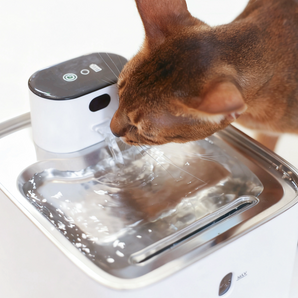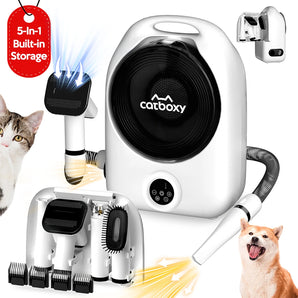Pet grooming is not just about making your furry friend look beautiful; it's also essential for their health and happiness. However, many pet owners encounter various challenges when grooming their pets. To assist you in caring for your beloved companions, here are some common pet grooming questions along with their solutions.
1. What should I do if my pet is afraid of baths?
Many pets become anxious or resistant during baths, leaving owners unsure of how to proceed. To help your pet get accustomed to bathing, consider the following tips:
- Use lukewarm water: Ensure the water temperature is comfortable—not too hot or too cold. This can help make the bathing experience more pleasant for your pet.
- Introduce water gradually: Instead of plunging your pet directly into water, start by wetting their fur slowly, allowing them to acclimate to the sensation.
- Incorporate treats or toys: Offering your pet their favorite treats or toys during bath time can distract them and ease their anxiety.
- Maintain a quiet environment: Keep the bathing area as calm as possible, minimizing loud noises to prevent increasing your pet’s fear.
- Adjust the water pressure: Avoid spraying water directly on your pet’s face or ears to make them feel more comfortable.
- Create positive associations: Reward your pet with treats or playtime after baths to reinforce a positive bathing experience.
2. What can I do about excessive shedding?
Shedding is a common concern for many pet owners, particularly with long-haired breeds, and can become more pronounced during seasonal changes. While shedding is natural, a sudden increase may signal health issues. Here are some ways to reduce shedding:
- Regular brushing: Daily grooming can help remove loose fur, promote blood circulation, and minimize skin flakes and shedding.
- Balanced diet: A nutritious diet is vital for healthy skin and coat. Ensure your pet gets adequate protein, fatty acids, and vitamins to keep their fur shiny and healthy.
- Scheduled baths: Bathe your pet with gentle, pet-specific shampoos to maintain skin cleanliness, which can reduce shedding due to dead hair or skin issues.
- Monitor for health problems: If your pet experiences significant shedding accompanied by itching or redness, consult a veterinarian to rule out infections or allergies.
3. How can I address my pet's skin sensitivity?
Some pets, especially short-haired or thin-skinned breeds, may experience skin sensitivity, which can manifest as itching, flaking, redness, or dryness. To manage skin sensitivity, consider these strategies:
- Use gentle grooming products: Opt for fragrance-free, additive-free natural shampoos and conditioners, which are typically more suitable for sensitive skin.
- Avoid over-bathing: Frequent baths can strip natural oils, leading to dryness and sensitivity. It's generally recommended to bathe pets every 4 to 6 weeks, depending on their environment and breed.
- Consult a veterinarian: If skin issues persist, seek professional advice to diagnose potential allergies or infections that may require specialized care.
4. How should I trim my pet's nails?
Nail trimming is an essential part of pet grooming, but many owners worry about cutting into the quick and causing injury. Here are some tips for safe nail trimming:
- Use pet-specific nail clippers: Avoid using human nail clippers; instead, choose tools designed for pets that fit their nail structure more comfortably.
- Be mindful of the quick: Pets' nails contain a quick, which can bleed if cut too short. Light-colored nails are easier to manage, while dark nails may require multiple small trims to avoid cutting too deep.
- Reward your pet post-trim: After trimming, give your pet a treat to create positive associations with the experience.
- Schedule regular trims: Consistent trimming every 2 to 4 weeks can prevent nails from becoming too long and reduce the risk of injury.
5. How do I care for my pet's ears?
Pets' ears can easily accumulate dirt and become breeding grounds for bacteria. Regular ear cleaning can effectively prevent infections:
- Use pet ear cleaners: Apply a few drops of a pet-specific ear cleaning solution and gently massage the base of the ear to help dislodge debris, then wipe the outer ear with a cotton ball.
- Avoid cotton swabs: Using cotton swabs can push dirt deeper into the ear canal, worsening blockages; stick to cotton balls for cleaning.
- Watch for odors and discharge: Unusual smells or excessive discharge may indicate an infection, warranting a vet visit.
6. How can I deal with pet odor?
Sometimes pets can emit unpleasant odors due to hygiene, diet, or health issues. Here’s how to tackle pet odor:
- Regular baths and grooming: Consistent bathing and brushing can significantly reduce odor sources.
- Check dental health: Oral issues like gum disease or tartar buildup are common causes of bad breath. Regular tooth brushing and dental treats can help maintain oral hygiene.
- Adjust diet: Some pet foods can lead to odor; opt for high-quality, natural pet food and avoid strong-smelling ingredients.
7. How can I make grooming easier for my pet?
Some pets may show anxiety or resistance during grooming, particularly when it involves haircuts or ear cleaning. To facilitate a smoother grooming process, try the following:
- Start young: Introduce grooming early in your pet’s life to help them adapt. Reward them after each session to build a positive association.
- Break it into sessions: If your pet struggles with long grooming sessions, divide the process into smaller parts—grooming one area at a time to prevent fatigue.
- Create a comfortable environment: Choose a quiet and familiar space for grooming, and ensure you remain calm and patient to avoid adding stress.
Pet grooming is about more than just aesthetics; it’s crucial for their health and comfort. While pet owners may face various challenges in daily care, understanding fundamental grooming practices can make these tasks more manageable. If you encounter particularly complex issues, consulting a professional groomer or veterinarian is always a wise choice.









